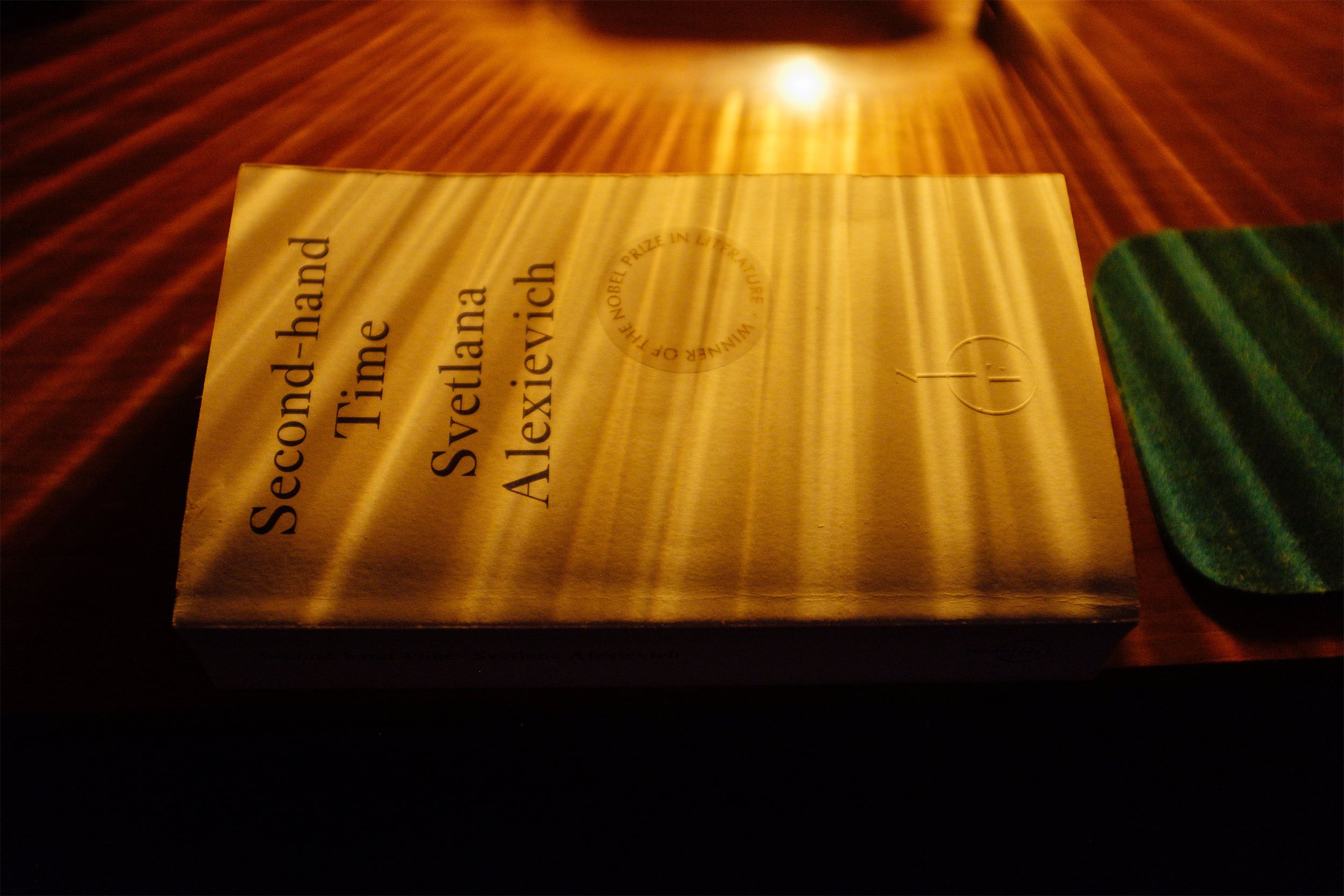The Contours of the Ordinary
December 10, 2020 Svetlana Alexievich Soviet Union History Memory

Last Saturday, Rocío and I ventured out into the cold in search for bagels, which we found at Berlin’s Shakespeare & Sons, a book store doubling as a bagel bakery.
Before chomping down our bagels, we spent an hour browsing the empty book shop and I was drawn to the stark white cover of Svetlana Alexievich’s Second-hand Time, a book about post-Soviet history told through what I can describe as blurbs: Transcribed interview answers that the author had assembled into a tapestry of impressions. It is, if you will, an impressionistic view of history, where the big pictures is composed of many little specks.
In her foreword, Alexievich writes:
The Soviet civilization… I’m rushing to make impressions of its traces, it’s familiar faces. I don’t ask people about socialism. I want to know about love, jealousy, childhood, old age. Music, dances, hairdos. The myriad sundry details of a vanished way of life. It’s the only way to chase the catastrophe into the contours of the ordinary and try to tell a story. Make some small discovery. (…)
Damn. She goes on:
There are an endless number of human truths. History is concerned solely with the facts; emotions are outside of its realm of interest. In fact, it’s considered improper to admit feelings into history. But I look at the world as a writer and not a historian. I am fascinated by people.
It makes me wonder where the notion of history being concerned only with quantifiable facts has come from—when very real histories are being told, retold, and ultimately shaped by people.